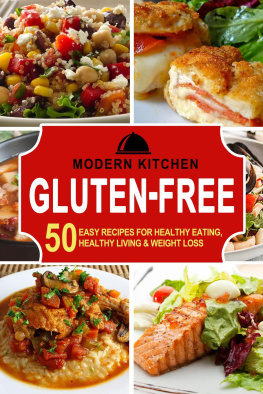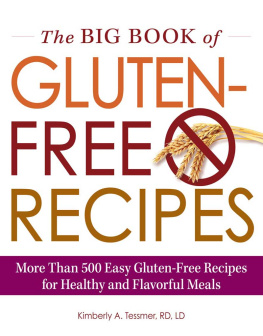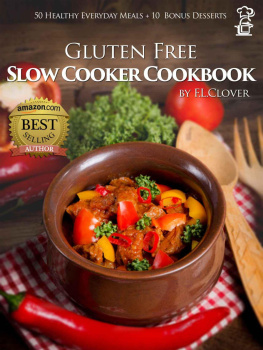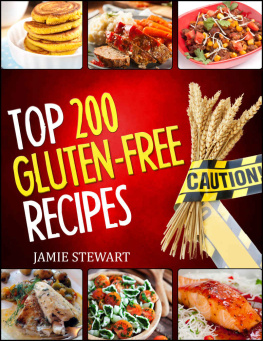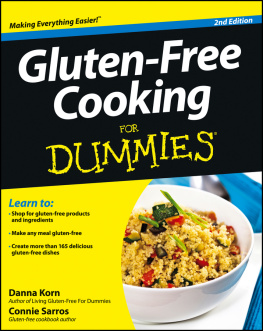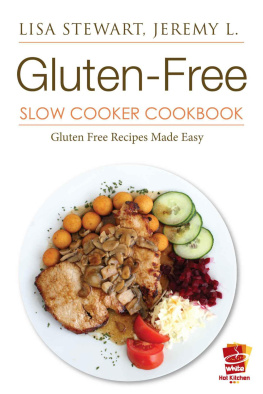Table of Contents
For my dietitian colleagues who work so tirelessly on behalf of people with celiac disease and for all my fellow travelers on this gluten-free path. Heres to good health!Trish
For those who have paved the road toward better understanding of celiac disease, for my grandparents, Charles and Rose Brown, who taught by example the importance of helping others, and for my mother and father, Anna and Stuart Brown, for their loveMarlisa
Foreword
by Shauna James Ahern
When I was first diagnosed with celiac sprue in 2005, my gastroenterologist spent four minutes explaining the gluten-free diet and how my life would have to change. I was then handed pamphlets containing old information. All vinegars besides malt vinegar are naturally gluten-free, but the literature informed me I should avoid anything with distilled vinegar. Bye-bye to mayonnaise and ketchup. Bakers running stalls at the Saturday farmers markets assured me that their spelt breads were low gluten, and therefore wouldnt leave my intestines in knots. They were wrong.
Determined to understand the disease that had been ruling my life for decades, I read every page on the Internet that contained the word celiac. Back then, there werent that many since awareness of the autoimmune disorder was still murky at best. I read postings on forums that warned of a life of deprivation and others that promised that breads made with white rice flour and nutritional yeast really didnt taste that bad. Hundreds of people longed for lists of candies they could suck on without worrying if they were safe. Many of the postings I read consisted of complaints and frowning emoticons. I made my way through it, but I didnt like the misinformation and the lack of positive attitude I kept finding.
I started my own Web site to write what I wished I could read: recipes for good food, detailed stories, and correct information about what gluten is and how to avoid it. My entire life has changed since I started writing Gluten-Free Girl, and all for the better, so I dont regret it.
However, if I had just been able to read American Dietetic Association Easy Gluten-Free when I was first diagnosed, I might not have started my own Web site.
This comprehensive and friendly guide for those who are learning how to live gluten-free is filled with great information. For years nutrition consultants Tricia Thompson and Marlisa Brown have been helping other people to understand their diets and how food affects their health. Their passion for making life easier and richer for those who must avoid gluten shines through in this book.
The book begins with useful advice about finding gluten-free ingredients, reading labels to make sure you are safe, and how to avoid cross-contamination. Thompson and Brown have plenty of words of wisdom about foods that feed us nutritiously, as well as deliciously. They introduce readers to good gluten-free grains and how to cook them. They even have tips for how to live gluten-free on a budget.
Mostly, the book is packed with interesting gluten-free recipes such as Spiced Quinoa Cereal, Citrus Millet Muffins, Scallop and Arugula Salad, Dates Stuffed with Brie and Almonds, Smashed Cauliflower with Parmesan Amaranth, Flank Steak with Homemade Teriyaki Sauce, and Chocolate Buckwheat Crepes with Raspberry Ricotta Filling. I dont know about you, but Im hungry.
American Dietetic Association Easy Gluten-Free shows that anyone living gluten-free can live a vibrant life, filled with flavor, with ease. It may have been hard for me to find good information and compelling recipes when I was first diagnosed, but if you are holding this book in your hands, your path will be much easier.
Preface
We wrote this cookbook to demonstrate just how easy it is to cook delicious, healthy gluten-free foods. The gluten-free recipes in this book focus on the types of foods that are important for all of us to eat, regardless of whether we must follow a gluten-free diet: whole grains, legumes, fruits, vegetables, fish, poultry, lean meat, and low-fat dairy.
We are both registered dietitians with decades of experience between us. We have dedicated our lives to helping individuals, especially those who must eat gluten-free, maintain healthy diets. We are very aware of the nutritional challenges unique to gluten-free diets. Gluten-free diets can be high in fat and low in carbohydrates, as well as low in other nutrients such as fiber, iron, and folate.
It is understandable that gluten-free diets may be somewhat unbalanced, especially at first. When you are newly diagnosed with celiac disease, dermatitis herpetiformis, or non-celiac gluten sensitivity, your top priority is simply to make sure the food you buy and prepare is free of gluten. Most likely, you are not thinking too much about nutrition. We will show you just how easy it is to choose gluten-free foods that are also healthy for you and the rest of your family.
With a little planning, gluten-free diets can be exceedingly healthy. One reason they sometimes arent very nutritious has to do with the grains that are frequently used in gluten-free baking mixes, breads, breakfast cereals, and pasta. Many of these products rely on refined, unenriched rice and corn flour, as well as starches such as tapioca, potato, corn, and rice. Unfortunately, these refined flours and starches provide little in the way of nutrition.
If you follow a gluten-free diet, you are exposed to very nutritious grains that most people have never heard about, never mind eaten, such as amaranth, buckwheat, quinoa, sorghum, millet, teff, and wild rice. This cookbook will show you how easy it is to incorporate them into your meals.
How to Use This Book
This book provides not only recipes but also advice on following a gluten-free diet. Chapter 1 includes extensive information on label reading to help ensure that the foods you buy are free of gluten. Chapter 2 focuses on essential nutrients you need for a healthy diet. Chapter 3 explains gluten-free whole grains and demystifies the less common onesidentifying what they are and where to buy them, and explaining how to use them.
The recipes are grouped in traditional categories: breakfast, breads, soups and salads, starters, sides, main courses, and sweet somethings. Each section is also divided into quick and easy gluten-free and creative gluten-free recipes.
Following a gluten-free diet can be a rich and satisfying lifestyle. There are so many new tastes and textures to try. On many fronts, but especially in regard to food, there has never been a better time to be diagnosed with celiac disease, dermatitis herpetiformis, or non-celiac gluten sensitivity. Gone are the days when rice cakes were one of the few available gluten-free breads. You now have so many gluten-free flours, grains, mixes, and convenience foods to choose from that you may have difficulty deciding what to eat next.
We truly hope you enjoy this cookbook as much as weve enjoyed writing it. Heres to delicious and nutritious gluten-free cooking (and eating)!
About the Authors
Tricia Thompson, M.S., R.D., is a nutrition consultant, researcher, author, and speaker specializing in celiac disease and the gluten-free diet. She is the author of a variety of books on the gluten-free diet, including The Gluten-Free Nutrition Guide


